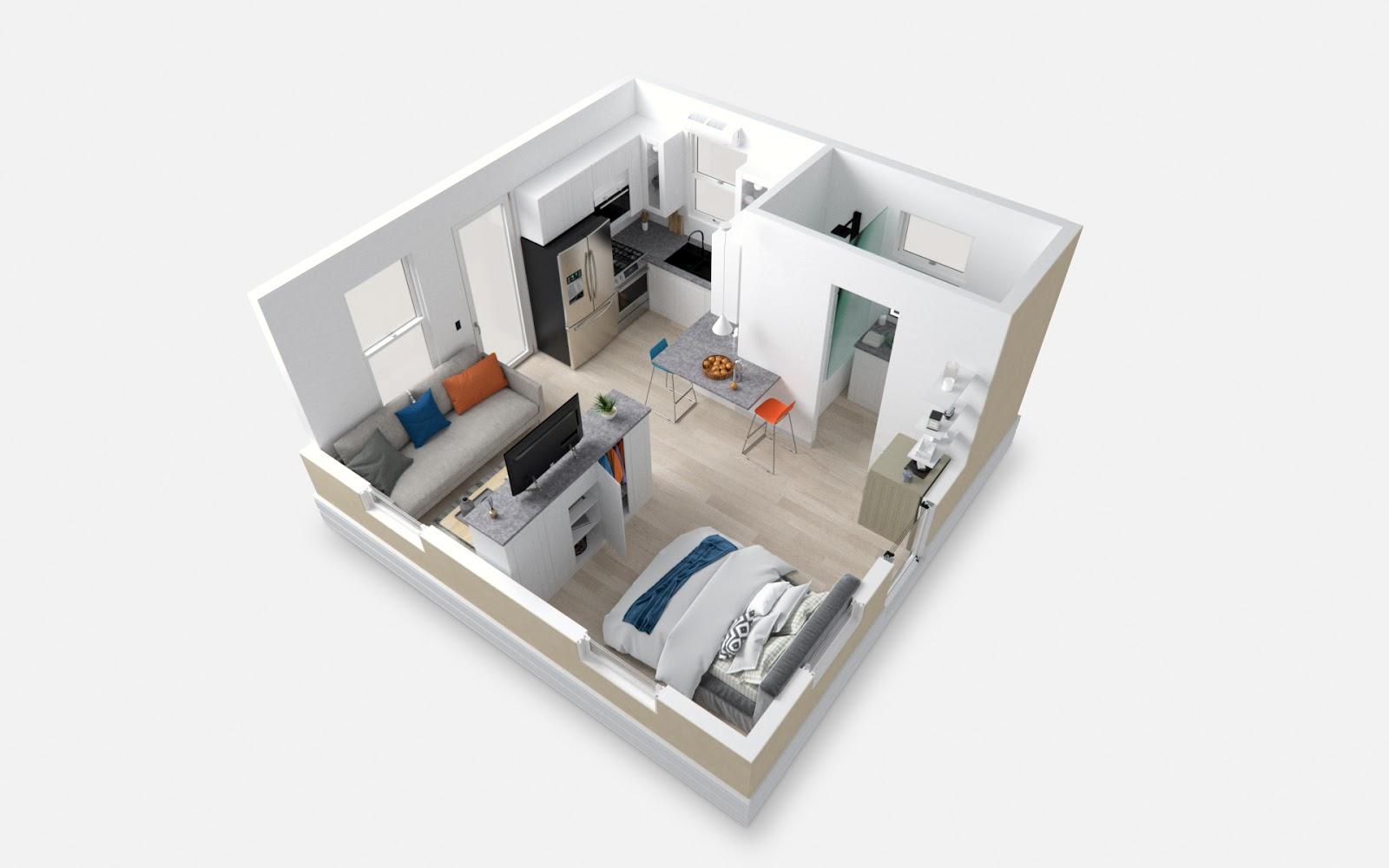The Rapid Shelter Innovation Showcase is a clearing house for smart ideas on how to lower construction times for cities in need of new housing for people living on the street or after a disaster.

When a tiny factory-built house from a startup called Boxabl arrives at a building site, the walls and roof are designed to quickly unfold, and the entire home can be assembled within just a few hours. The design is one of dozens listed on a new website that shares housing concepts that cities can use to rapidly respond to homelessness or in the case of a disaster.
The platform, called the Rapid Shelter Innovation Showcase, grew out of work in Los Angeles, where around 60,000 people are homeless on any given night. The Housing Innovation Collaborative, a nonprofit coalition, created the platform to push forward solutions to the housing crisis in the area. The team initially planned to build a physical showcase of new housing, and then the corona virus struck. As the idea went virtual, the group realized that it could be a resource for cities anywhere. So far, the platform has collected 45 designs, some of which have been built or prototypes; others are concepts. Here are a few of the ideas:

NYC Emergency Housing Prototype
Designed for quick assembly after a disaster, these multistory buildings from Garrison Architects can be built in less than 15 hours. Units range from one to three bedrooms, include kitchens, bathrooms, and storage space, and can be hooked up to solar power.

Maidan Tent
From a team of Italian designers focused on creating a concept for a shelter for a refugee camp, this design combines a central shared space for socializing with individual rooms that surround it. The designers collaborated with the UN Migration Agency, the engineering firm Arup, and the Laboratory for Effective Anti-Poverty Policies at Bocconi University.

Connect Shelter
These shelters, from a company called Connect Homes that makes sustainable factory-built homes, are assembled almost entirely off-site and then can be quickly installed without a foundation or in-ground utilities. Each unit comes with a bedroom and bathroom; because the units are isolated from one another, with separate plumbing and mechanical systems, they could also be useful for COVID-19 patients.

The Scaffold
This concept for lightweight prefab rooms—designed by Alejandra Novelo and Khoa Vu in collaboration with Gensler—are laid out with space in between to allow for increased daylight and ventilation and to create shared community spaces. Using standard scaffolding and low-cost prefab modules lowers the cost.

Container-based emergency housing
Built using 40-foot-long shipping containers by the green builder IndieDwell, these energy-efficient shelters have been built in several cities, including 100 in San Jose, California.

Rapid Response Modular Supportive Housing
These prefab apartment buildings from a Canadian company called Horizon North Modular Solutions, typically made with 250-square-foot apartments, can be quickly constructed on a relocatable foundation that can later be moved to another site. More than 1,500 units are in place in British Columbia.

Each of the designs varies in cost, time to build, and other features, and the new website attempts to share basic details clearly so that cities searching for solutions can easily compare the options. The platform also aims to show communities that some forms of this housing can be beautiful, helping overcome common objections from neighbors who resist new projects. “We’re trying to sort of paint the picture of what other projects have looked like and the range of solutions,” says Charly Ligety, director of housing innovation at Housing on Merit, an L.A.-based nonprofit helping lead the new platform. “As long as it remains in a black box, we can’t really have a conversation around what it realistically looks like to shelter 50,000 people.” The platform will soon include more details about how existing projects have been funded, since funding is another major challenge, especially as cities struggle to balance the need for permanent, long-term solutions to homelessness with the need for immediate emergency shelter so people aren’t sleeping on the street.
Architects using the new platform can quickly research other approaches in the space and begin to incorporate ideas from other designs. “We’re trying to be sort of an anti-RFP innovation competition,” Ligety says. “We want to encourage it to be a collaborative process.”
